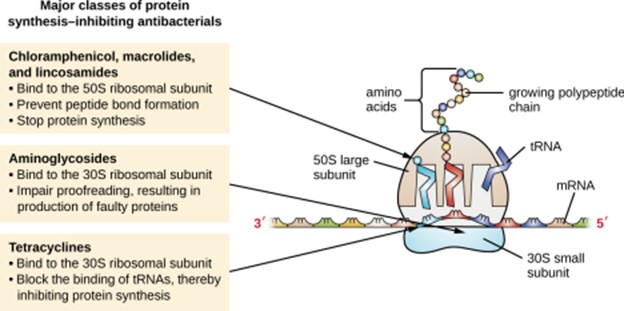Celecoxib is what class of drug?
Corticosteroid
Muscle relaxant
Narcotic
Nonsteroidal anti-inflammatory drug (NSAID)
The Correct Answer is D
Nonsteroidal anti-inflammatory drugs (NSAIDs) are a class of medications commonly used to relieve pain, reduce inflammation, and lower fever. They work by inhibiting the production of prostaglandins, which are substances in the body that play a role in pain and inflammation. Celecoxib specifically belongs to the subclass of NSAIDs known as selective COX-2 inhibitors, which target the enzyme cyclooxygenase-2 (COX-2). By selectively inhibiting COX-2, celecoxib helps to reduce inflammation and pain while potentially minimizing the gastrointestinal side effects associated with traditional non-selective NSAIDs.
Nursing Test Bank
Naxlex Comprehensive Predictor Exams
Related Questions
Correct Answer is {"dropdown-group-1":"A","dropdown-group-2":"B"}
Explanation
Aminoglycosides work by binding to the 30S subunit; this binding interferes with the bacterial ribosome's ability to synthesize proteins. By inhibiting protein synthesis, aminoglycosides disrupt bacterial growth and can lead to bacterial cell death.

Correct Answer is D
Explanation
Mrs. Kalen is diagnosed with gastroenteritis and dehydration, and the arterial blood gas results indicate metabolic alkalosis (elevated pH and HCO3-). This suggests that there is an excessive loss of gastric acid and chloride ions from vomiting, leading to an imbalance of electrolytes and an increase in bicarbonate levels.
To correct the imbalance and treat dehydration, the primary intervention is fluid replacement. Administration of IV 0.9 Saline Solution, also known as normal saline, is commonly used for fluid resuscitation and rehydration. This isotonic solution helps restore fluid balance and electrolyte levels in the body.
Administration of antiemetics may help control vomiting, but the primary treatment focus in this case is fluid and electrolyte replacement to correct dehydration and the associated metabolic alkalosis.
Administration of diuretics, which increase urine output, would not be appropriate in this case as the patient is already experiencing dehydration.
Electrolyte replacement may be necessary if there are specific electrolyte imbalances identified, but the primary treatment is fluid replacement with IV saline solution.
Having the patient go home and rest without addressing the underlying dehydration and metabolic alkalosis would not be appropriate as it can lead to further complications.
Whether you are a student looking to ace your exams or a practicing nurse seeking to enhance your expertise , our nursing education contents will empower you with the confidence and competence to make a difference in the lives of patients and become a respected leader in the healthcare field.
Visit Naxlex, invest in your future and unlock endless possibilities with our unparalleled nursing education contents today
Report Wrong Answer on the Current Question
Do you disagree with the answer? If yes, what is your expected answer? Explain.
Kindly be descriptive with the issue you are facing.
